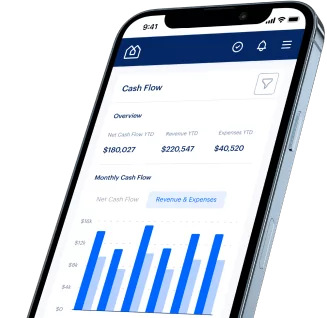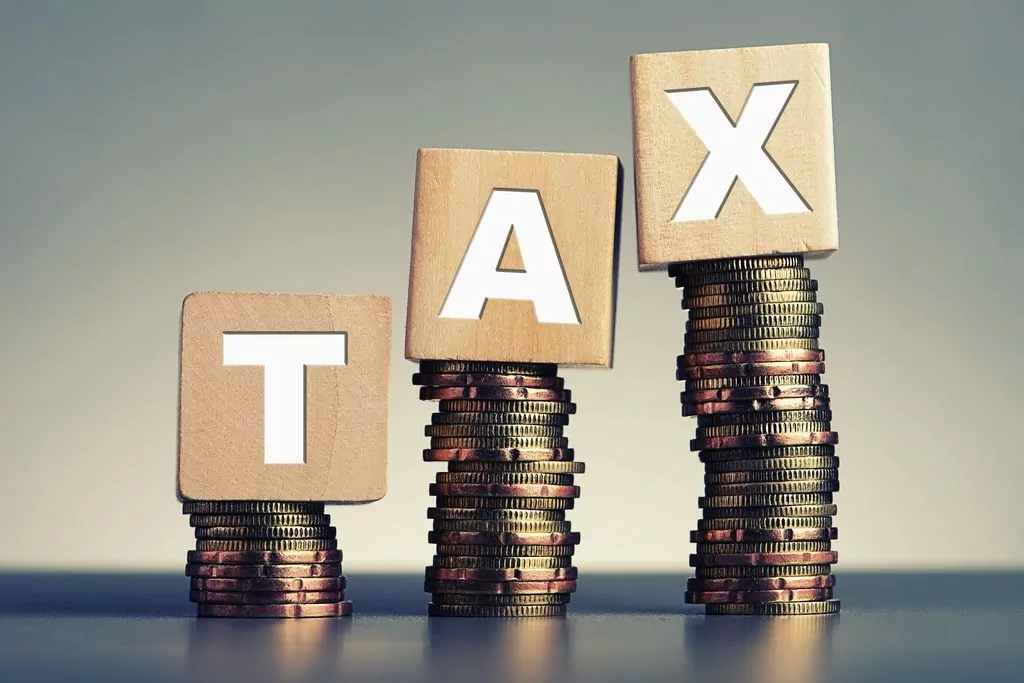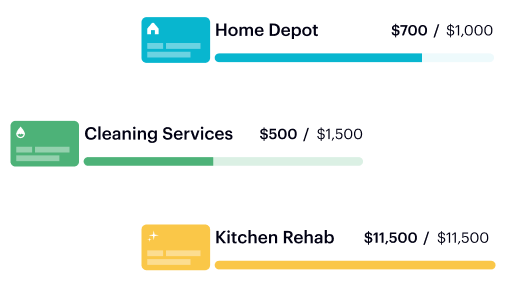Having a rental property will change any landlord’s tax situation. However, landlords and rental property owners are entitled to many tax deductions.
Tax Tips for Landlords and Property Managers
There are many ways that landlords can deduct from their taxes, whether they file separately, jointly, or as head of household, and that’s more than just standard deductions.
Below, we’ll explore some of the ways to reduce yearly taxes for landlords and rental property owners.

1. Interest is Tax Deductible
The interest that a property owner pays on their mortgage is an expense that they can claim as a deduction.
If the property owner refinances the mortgage and uses the extra funds to repair or keep the property maintained, the additional interest is also tax-deductible.
The mortgage lender will send the property owner a Mortgage Interest Statement (Form 1098) within the first two months of the new year to show how much mortgage interest that they have paid.
It is the legal obligation of the mortgage lender to send to the property owner if the amount is more than $600. If the amount is less than $600, the lender isn’t required to send this form and the requestor may need to do the calculations themselves.
Other types of interest may also be deductible. For instance, the interest paid on loans to make improvements to the home and credit card interest paid on purchases for their rental may also be deductible.
For expense management purposes, it’s best to keep track of these using a spreadsheet or landlord banking platform. Landlords may want to seek the consultation of their accountant or tax preparer regarding what deductions are allowed.
2. Establish an Office at Home
Many landlords do some or all of their administrative work at home in a dedicated room or portion of a room. If that’s the case, there are two ways to calculate how much of a deduction that they can take. The IRS has also outlined the legal requirements for claiming a home office deduction.
Using the simplified method, a landlord can take a standard deduction of $5 per square foot of the home used for their rental business up to a maximum of 300 square feet. The maximum deduction for this option is $1,500.
If they use the regular method, deductions for the home office are based on the percentage of the home that’s devoted to the business. For example, if the home is 2,000 square feet and the office is 200 square feet (or 10% of the home), they can deduct 10% of their home expenses, but only if the office is used solely for the rental property management business.
That means they need to track their home expenses carefully. This can include their home insurance, mortgage interest, utility bills, internet costs, and more. On the other hand, office expenses—such as a desk or chair—will be 100% deductible using the regular method.
Another reason to establish a home office is that local travel between their home and the rental property can also be deductible.
Landlords can track these expenses using property management software, like Baselane’s expense management features, which makes all faces of bookkeeping easier than ever.
3. Keep Track of Transportation and Travel Costs
Traveling back and forth between the home office (or where the rental business is located) and property for rent collection, showing the property to tenants, or managing and maintaining the property can be tax-deductible.
There are two ways to calculate this deduction. The landlord can use the actual expenses method or the standard mileage rate.
Using the actual expenses method requires keeping track of the percentage of the mileage used for business compared to the total mileage. These expenses can include gas, car loan interest or leasing costs, auto insurance, and repairs and maintenance.
Using the standard mileage rate allows landlords to apply a per-mile rate to the total number of miles they’ve driven to take care of their rental property business.
The rate, which is currently 56 cents per mile in 2021, may change every six months or annually so check the Internal Revenue Service (IRS) before choosing which method to use.
If the owner travels a longer distance, they may also be able to deduct travel-related expenses. The IRS will allow this if the primary reason for the trip is for business and the expenses are considered ordinary and necessary. The key is that travel is required for the rental property business and the costs incurred are necessary and not excessive.
Some expenses that are deductible include:
- Transportation. The cost of traveling by train or plane can be deductible as well as taxis or rental cars. If the landlord ends up driving, they can use either the actual expenses method or the standard mileage rate.
- Lodging. Rental property owners can deduct the cost of hotels, motels, or whichever form of accommodation they use.
- Food and beverages. Food and beverages are allowed to deduct half of the amount spent on food and beverages when going to and from the property as well as the days spent doing business.
- Other costs. The costs to use a hotel or public Wi-Fi or to make copies of paperwork, for example, can also be deducted.
If the landlord chooses to take some time for leisure, they’re allowed to do so. However, the costs of transportation, lodging, and food won’t be allowed on those days.
Also, the IRS notes that a rental property owner can’t deduct the cost of a trip if the primary purpose is to improve the property because the cost of improvements is recovered by taking depreciation.
Any expenses incurred as a landlord should be kept in a separate bank account dedicated to the business related to the rental property. Keeping all expenses in one place makes things easier, and there are landlord banking products to help make these tools even more tailored to the needs of landlords.
4. Deduct Depreciation
The cost of purchasing a rental property isn’t fully deductible all at once. Instead, the cost is deducted over time by using depreciation. Depreciation is allowed once a property is available and ready to rent to a tenant.
The value of the building is allowed to depreciate, but not the land. Residential properties are depreciated over 27.5 years, while commercial properties are depreciated over 39 years. The calculation can be tricky so it’s best to get expert advice. Also, depreciation must be used when making improvements to a property. You can seek out tax software for a more affordable option. Programs like TurboTax can help calculate tax deductions for rental property depreciation.
For example, replacing a roof or adding an addition to a house are considered improvements. Fixing a roof, however, is considered a repair and not an improvement.
5. There Are Many More Tax Deductions
The deductions already mentioned are some of the most popular ones, but many others can reduce the number of tax payments required. Here’s a rundown of what else is deductible:
- Advertising. Finding a new tenant isn’t always easy and it might require the need to advertise its availability by using flyers, classified ads, or signs.
- Cleaning and maintenance. When a tenant moves out, the landlord will likely want to hire a cleaner or handyperson to spruce the place up.
- Employees. Persons who work for the landlord and their costs, including payroll taxes, can be deducted.
- Property Insurance. Rental Property insurance is required to purchase any rental property. Luckily, the costs can be deducted.
- Legal and professional fees. Landlords or rental property owners might want to hire a real estate agent instead of listing a property themselves. They can also hire a lawyer or use online legal services to draw up a rental agreement, and an accountant to handle their taxes.
- Management fees. If the landlord hires a company to manage their property, the costs can be deducted.
- Start-Up Costs. Depending on the income a landlord earns, 20% of their net rental income or 2.5% of the initial cost of the rental property plus 25% of the amount paid to employees can be written off.
- Repairs. These are costs to keep the property in good working condition but don’t add value.
- Property Taxes. This isn’t a federal tax, but one that must be paid at the local level. Landlords are entitled to make a property tax deduction.
- Utilities. Utilities can also choose to cover the costs of some or all of the utility bills instead of having the tenant pay for them.

Final Thoughts: Landlord’s Guide to Deducting Taxes
Being a landlord has its ups and downs. But when it comes to paying state and federal income taxes, there are several deductions available to the landlord to reduce their overall tax bill. The size of the deductions when filing a tax return may also lead to a tax refund.
To make their lives less complicated, landlords would be wise to keep detailed records of all deductions and consider hiring a tax professional to help.
FAQs
In most cases, landlords need to pay tax on any rent collected. That’s because rental income is considered to be taxable income. The amount of federal and state taxes a landlord must pay is based on the income level and the tax rates in their state.
There may be instances where the landlord may have losses to offset income earned from the rental property. However, they won’t be able to deduct rental losses (which are also called passive losses) from other income earned from their job or other investments, such as stocks, because they’re not considered to be passive income by the IRS. Passive losses can only be used to offset passive income.
There are various deductions that a landlord can use to lower the amount of taxes that they have to pay. This can include mortgage interest, having a home office, travel and transportation expenses, depreciation, legal and professional fees, cleaning and maintenance costs, insurance, management fees, property taxes, and much more.
If a landlord is interested in learning about the deductions that are available to them, they can get additional details about each one in the article above.
Yes. If a landlord happens to rent out a property for a short period, it’s possible to avoid having to pay any taxes.
A landlord is allowed to rent out their home (or a room in their home) for 14 days or less every year and not have to pay tax or report it to the IRS. This is sometimes known as the 14-day rule. Since the rental property owner does not have to report this as income, they're also not allowed to report any deductions.
However, if the property is a long-term rental, the landlord will almost certainly need to pay taxes if they don’t have any rental losses.
Keep in mind though that if landlords continually have rental losses, their property probably isn’t going to turn out to be a good long-term investment.






